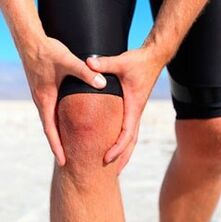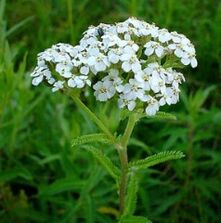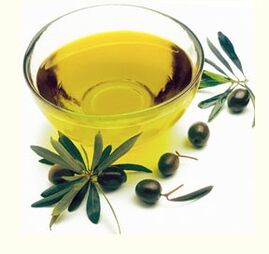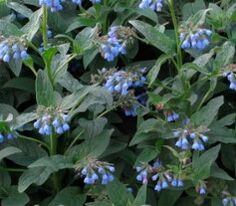The negative changes and destruction process that occur in the cartilage tissue of the knee is called knee arthritis. The disease is chronic and accompanied by painful symptoms. Most commonly, knee arthritis develops with age and often finds a post-traumatic appearance. The disease is also known as the contribution, and its folk name is "Salt Deposition".
Logo
Adenotropic cancer is caused by poor blood circulation in the bone and blood vessels, which leads to the destruction of cartilage tissue. As a result, deformed joints caused by bone growth may occur.

Usually, the first symptom of arthritis has little attention. Weak pain does not cause too much discomfort and does not restrict exercise. It can be extended for several years until aggravation occurs. After exercise or legs, the pain symptoms will be slightly exacerbated.
As the disease develops, new symptoms appear and old symptoms are also enhanced. The pain seems to be like this, and there is no rest even for a long time. Long-term pain reactions to knees with long steps or weight lifting.
After the second stage of the knee joint joint, these symptoms occur:
- Slimming - Articular fluid accumulates in the joints. Its surplus will cause dense formation of the posterior wall of the joint cavity. This phenomenon is called Baker's cyst and can be cured without surgery.
- Deformation of the knee. At first, it's a little swelling and the shape of the knees may change.
- Closing. Appears in the second and third stages of the disease. With the sharp tightening, the pain symptoms are clearly felt.
- Limited mobility. This is a characteristic of the second and third degree joints when you can only bend your legs at the right angle. In neglected form, the knee can be completely still and the joints in it are very deformed.
- mete-sensitivity. Pain during changes in weather conditions.
Symptoms and their intensity may depend on the stage of the disease development:
- On the first level, pain occurs after active physical fatigue. Initial arthritis can damage the cartilage but will not deform the joints. Diagnosis of the disease is difficult.
- To the second degree, the joint space is narrow and the cartilage tissue is clearly visible in X-rays. Exercises involved in the knee can cause acute pain and tighten when bent. What's worse is that the exposed appearance is obvious in their deformation.
- In the third level, the exposed areas of the bone "gaze" through the thinned cartilage fabric. Salt is in the joint cavity. The pain persists even during rest.
Disease Type
There are several types of jointness in the knee joint. source:
- Basic. This type of knee joint articulation does not depend on other diseases. Elderly, women and overweight people are at risk.
- secondary. The disease occurs after an injury or infectious disease. If you treat damage or inflammation in your knee joint in time, it can be avoided.
By location:
- bilateral. Both knees are affected. The disease is of age, is clearer and severely threatens disability. Bilateral articity is usually the main one.
- Correct - out. The disease attacks the right knee and is most commonly found in athletes and people who often experience it on the right leg.
- Left. The left knee suffers, a disease that is all for athletes and the elderly.
Deformed articulation of the knee is a disease, and to a greater extent, a disease for all women. It is caused by the intense deposition of salt. In the initial stage of deformation, the medial side of the joint is affected by late stages - the exterior is affected as well. Deformed partners should be treated as early as possible so that cartilage in the upper area is retained under normal circumstances. The main symptoms are acute pain and tightness.
Patelo Stock Syndrome
Usually, the articularity of the knee joint is preceded by tellofmoral syndrome. In medical literature and practice, it is commonly referred to as arthritis of the same name. This is a lesion of cartilage fabric in the bone. Patelo femoral syndrome is accompanied by the following symptoms:
- Joint pain, prolonged bends of legs, jumping, running, walking up stairs or squatting.
- The knees have limited fluidity.
- Crystals and "clicks" in joints.
- Sites in the site.
tello bone syndrome is usually manifested in people associated with activities or lifestyles with heavy knee burdens (athletes, fat people). Additionally, this type of joint disease plagues the elderly. Pat osteoarthritis is often the result of severe knee injuries.
When diagnosing a syndrome, it is important to immediately ensure the rest of the rest of the leg that is painful. Sometimes, in order to remove the load from the knee, a doctor can recommend an orthosis or a tight bandage. The whole person needs to lose weight slightly. Relieve pain at home, you can perform cooling compression.
Patelo stock syndrome gradually develops:
- At level 1, pain only occurs after a large load, and knee fatigue is often felt.
- In the second pain, discomfort is more frequent and joints are restricted. Symptoms occur after rest.
- In the third constant pain, the significant limitation of movement.
It is necessary to treat patallofmoral syndrome in a comprehensive way, not just to relieve pain. Treatment should include receiving medication, introducing cartilage protective agents, and physical therapy. Diet and physical therapy exercises won't be redundant.
Posttraumatic arthritis
Posttraumatic arthritis is the youngest disease. After the knee is injured, the limbs are fixed and their blood circulation deteriorates. This negatively affects the cartilage tissue and causes joint development. Sometimes traumatic arthritis occurs after surgery in the joint. Scars on the tissue can damage the blood supply to the knee.
The posttraumatic type of this disease is chronic, so treatment is designed to ensure that arthritis does not progress further. It is nearly impossible to cure traumatic arthritis at home. It is necessary to receive painkillers, cartilage protectors and anti-impurities, physical therapy exercises, massages and hardware programs. In advanced cases, surgical intervention may be required.
hematoma
Hematobrachial tumor is a single knee arthritis that is caused by injury or blood clotting problems. Hematology may be caused by these factors:
- Bruises or fractures in the knee joint and ta bones;
- Traumatic damage to bent plates and cartilage;
- rupture of ligament or synovial membrane;
- a fracture of the femur or large beret;
- hemophilia;
- Tumors of various origins;
- some neurological and infectious diseases;
- prolonged anticoagulant intake;
- osteoarthritis;
- surgical intervention;
- Vascular problems.
- The knee swells or greatly changes its shape.
- When pressed under your finger, you felt the flood.
- The temperature rises in the injured area;
- Soft fabric in stone and blue.
Hematoma can be accurately diagnosed after puncture combined with puncture. In addition to analyzing joint fluid, CT and MRI can also be performed.
To prevent complications, immediate treatment of hematoma is required. If you suffer a minor injury, you can start treatment at home. Simple first aid methods will help minimize the consequences of bleeding in joints:
- Provide peacefully damaged knees;
- Raise your legs and fix it;
- Make a cold press;
- Perform anesthesia.
Even at home, this action can relieve pain symptoms and help gently treat bleeding, and in more difficult situations, you need to seek medical help.
Folk therapy
Doctors should treat provocative diseases with folk therapy. It is recommended to combine folk therapy with official medical methods. With the help of folk therapy, vascular disease can be effectively treated or complications can be relieved. It is recommended to use horseradish for compression:
- Peel and grind a small piece of horseradish.
- The rhizome has strongly sensitive skin and is replaced by plant leaves.
- Place the lump in the water bath for a few minutes.
- Place the roots on the gauze and compress.
- The duration of the process is two hours.
At home, ointment cannot be used in the first two days after the injury due to the traumatic hem.
In severe injuries, heavy or prolonged bleeding in the joints, you must absolutely contact a trauma scientist. Folk treatments in this case are secondary. A blood-based diet must be used in the hospital to treat hematoma, but at home you can use medications that have anti-inflammatory and hemostatic effects. Infusions based on this herb will be useful:

- Yarrow;
- Oregano
- nettle.
Like this:
- Raw materials for grinding plants.
- Mix the herbs evenly.
- Three tablespoons of the series poured 600 ml of boiling water.
- Persist within 1-1. 5 hours.
Warm filtered infusion should be taken 50 ml three times a day.
gelatin
At home, you can try gelatin to treat deformed joints. It contains a lot of collagen, which can improve the condition of cartilage tissue and increase the production of interoperative lubrication. D-likalamine treatment should be combined with intake of vitamin complexes rich in iron and vitamins.
The healing mixture with gelatin is prepared according to this recipe:
- Pour a teaspoon of gelatin and 50 ml of cold water.
- Leave the mixture for 12 hours.
- Add 150 ml of boiling water.
- After stirring, add a teaspoon of honey.
One drink, use gelatin drink for fasting for 10 days. Then, you need to take a week off. The course is repeated twice.
Ointment and trash
To prepare an effective ointment house, the following components are required:
- Turpentine oil-150ml;
- Vodka-150ml;
- Olive oil-150 ml;
- Camphor - 3 grams.

All components of the cream need to be mixed and the remedy is applied twice a day to the sore area.
At home, radish-based ointment can be used to treat deformed joints. The following ingredients will be required:
- Black radish;
- Linden Honey - 150g;
- Vodka-100ml;
- Sea salt - 15 grams.
Masi Recipe:
- Clean and cut the carrots.
- Skip the grinding in the root crop or mixer.
- Squeeze the juice out of the carrot.
- Add other components and mix the quality.
This mixture uses knee aches.
As an ointment, you can use fatty pork fat. Every night, you need to rub the product into the joints and isolate it overnight. In this way, treatment for arthritis is required for at least six months.
Warming ointment comes in handy when you need to quickly relieve pain and restore mobility to your legs. It is important to understand that these drugs cannot cure the disease, but only temporarily relieve the symptoms. Warming medications are contraindicated after traumatic arthritis and skin damage.
Warming drugs that have anti-inflammatory effects can be produced at home. Prepare therapeutic ointments from these ingredients:
- Paper towels - 1 cup;
- Tissue Roots - 2 cups;
- Olive oil-0. 5 cups;
- Honey - 0. 5 cups.
Preparation and application methods:
- Grind and mix vegetable ingredients.
- Melt, if necessary, honey.
- Mix all components, preferably using a mixer.
- Before use, the required portion of the product must be heated.
- The ointment can be stored in the refrigerator for 2 weeks or in the refrigerator for 3 months.
- Apply the drug to the joints, isolate and leave for 8-12 hours.

Hyaluronic acid
Primary arthritis is treated very effectively with hyaluronic acid. This substance is the basis of synovial fluid.Intra-articular injection of hyaluronic acid can cure or stop the development of any type of knee arthritis. This program is prohibited from being executed at home! Hyaluronic acid injection can only be performed by an experienced doctor under special conditions.
In his case, patients can eat foods rich in hyaluronic acid to enhance their therapeutic effects. For joint health, it is recommended to introduce the following dishes into your diet:
- Chicken broth or jelly, prepared using crests, paws, tendons and skin;
- soybeans;
- Tofu;
- Soy milk;
- Red grape skin;
- red wine;
- Starchy root crops and vegetables.
In order to activate hyaluronic acid production with its own organism, it must receive sufficient calcium, conventional and vitamin C.


























